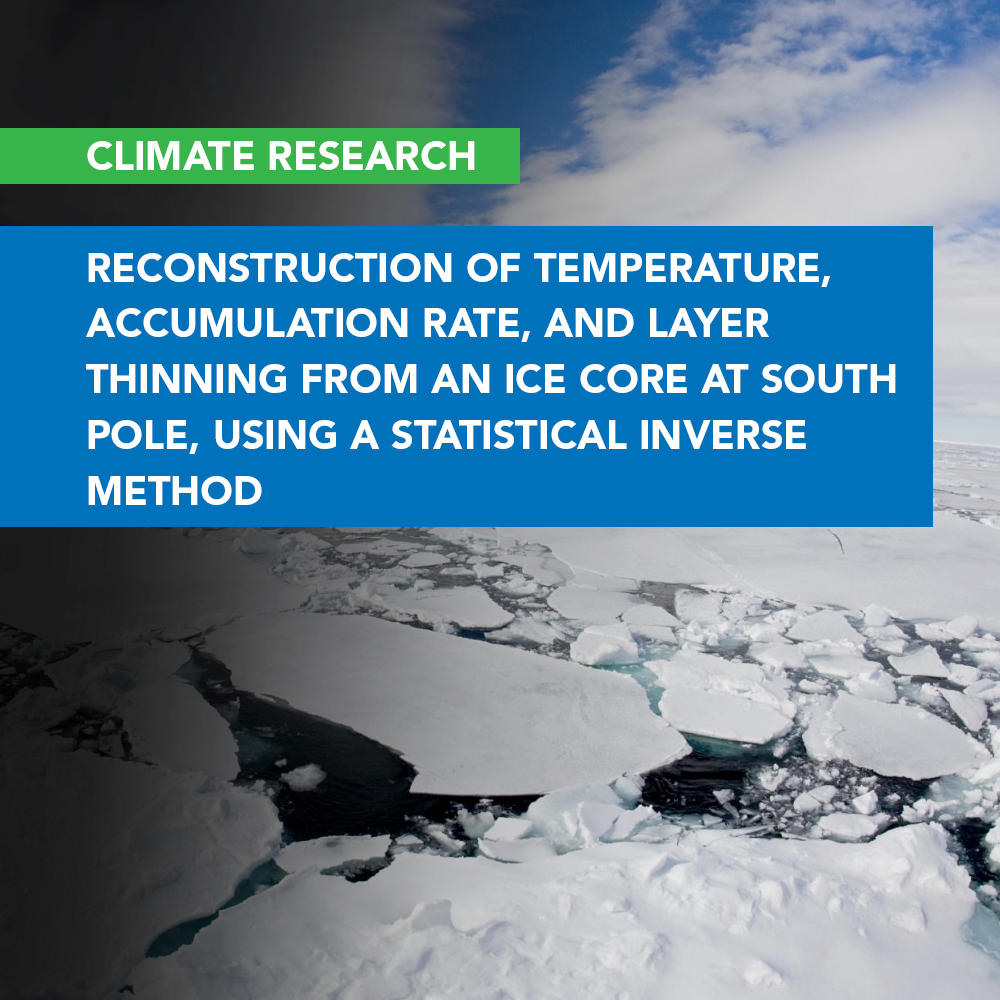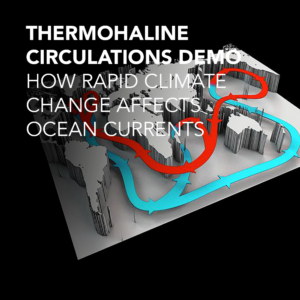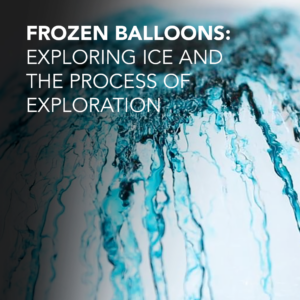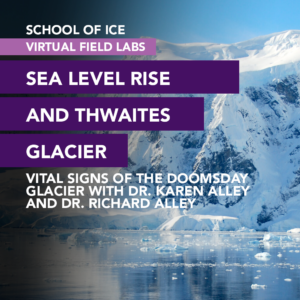Article Abstract
Data from the South Pole ice core (SPC14) are used to constrain climate conditions and ice-flow-induced layer thinning for the last 54,000 years. Empirical constraints are obtained from the SPC14 ice and gas timescales, used to calculate annual-layer thickness and the gas-ice age difference (Δage), and from high-resolution measurements of water isotopes, used to calculate the water-isotope diffusion length. Both Δage and diffusion length depend on firn properties and therefore contain information about past temperature and snow-accumulation rate. A statistical inverse approach is used to obtain an ensemble of reconstructions of temperature, accumulation-rate, and thinning of annual layers in the ice sheet at the SPC14 site. The traditional water-isotope/temperature relationship is not used as a constraint; the results therefore provide an independent calibration of that relationship. The temperature reconstruction yields a glacial-interglacial temperature change of 6.7 ± 1.0°C at the South Pole. The sensitivity of δ18O to temperature is 0.99 ± 0.03 ‰°C−1, significantly greater than the spatial slope of 0.8‰°C−1 that has been used previously to determine temperature changes from East Antarctic ice core records. The reconstructions of accumulation rate and ice thinning show millennial-scale variations in the thinning function as well as decreased thinning at depth compared to the results of a 1-D ice flow model, suggesting influence of bedrock topography on ice flow.
What we know: Past changes in temperature and snowfall can tell us how glaciers and ice sheets have changed along with climate. Unfortunately, measuring temperature and snowfall from an ice core thousands of years in the past is very hard, especially in places like the South Pole, which is extremely cold and dry.
Why it’s important: Despite the challenges, accurate measurements of climate in the past are essential if we want to know how Antarctica will respond to the changes happening today.
How the research was done: In this project, the authors used a mile-long ice core from the South Pole to learn about past changes in temperature and snowfall. By combining the age of the ice, the age of the gas bubbles trapped in the ice, and the composition of the ice itself we were able to use mathematics to show the history of both temperature and snowfall at the South Pole.
What the evidence shows: Our results show that we can use an important new technique that will provide more opportunities to create climate histories from ice cores in the future. This technique also will allow scientists to improve existing estimates of past temperatures in Antarctica.






